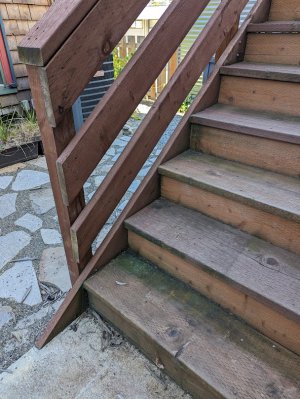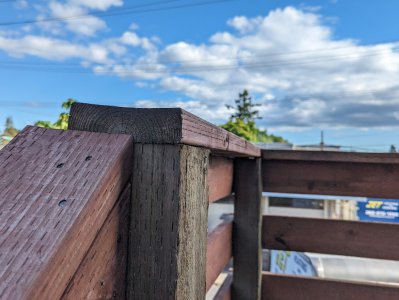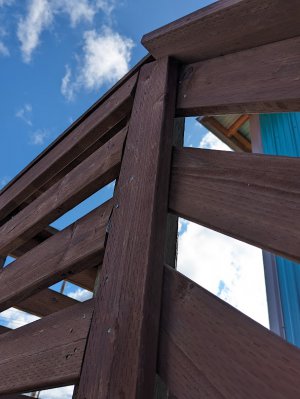- Joined
- Oct 16, 2019
- Messages
- 6,576
Doing nothing is a fine option. I would sand down the hand rails, paying particular attention anywhere where the grain rises to the surface and could possibly create a splinter. I'd start with 220gr and go no finer than 320gr.Carpenter bees didn't come around this year, but last year they came looking for stuff to dig. My house is sided with cedar shakes, I've seen bees fly in a crack, make some awful scraping noise, and spit out a pellet of wood- they are fast at it too. Luckily, it's just black coconut ants and moss for the most part. The stairs are on the western wall, so it's not too extreme.
I've had to consider that doing nothing is an option too. If that won't lead to later regrets, I'm okay with it. I can sand down the hand rails and call it good. Should I run around with the screw gun and try to hold down anything that's twisting, or is that going to be a fight later on?
It was really moist when built, but after a year it was plenty dry. I was more unnerved by the cupping and pulling at joints than the finish. I wish to preserve its function as long as I can before breaking down and rebuilding it right. I just got the dang thing paid off last September, so... yep.
You may have some luck fastening down the twisted boards if you can clamp them down to the joists and screw them down while clamped. Otherwise the screw will just bury itself in the wood before it can really bring the board down.




